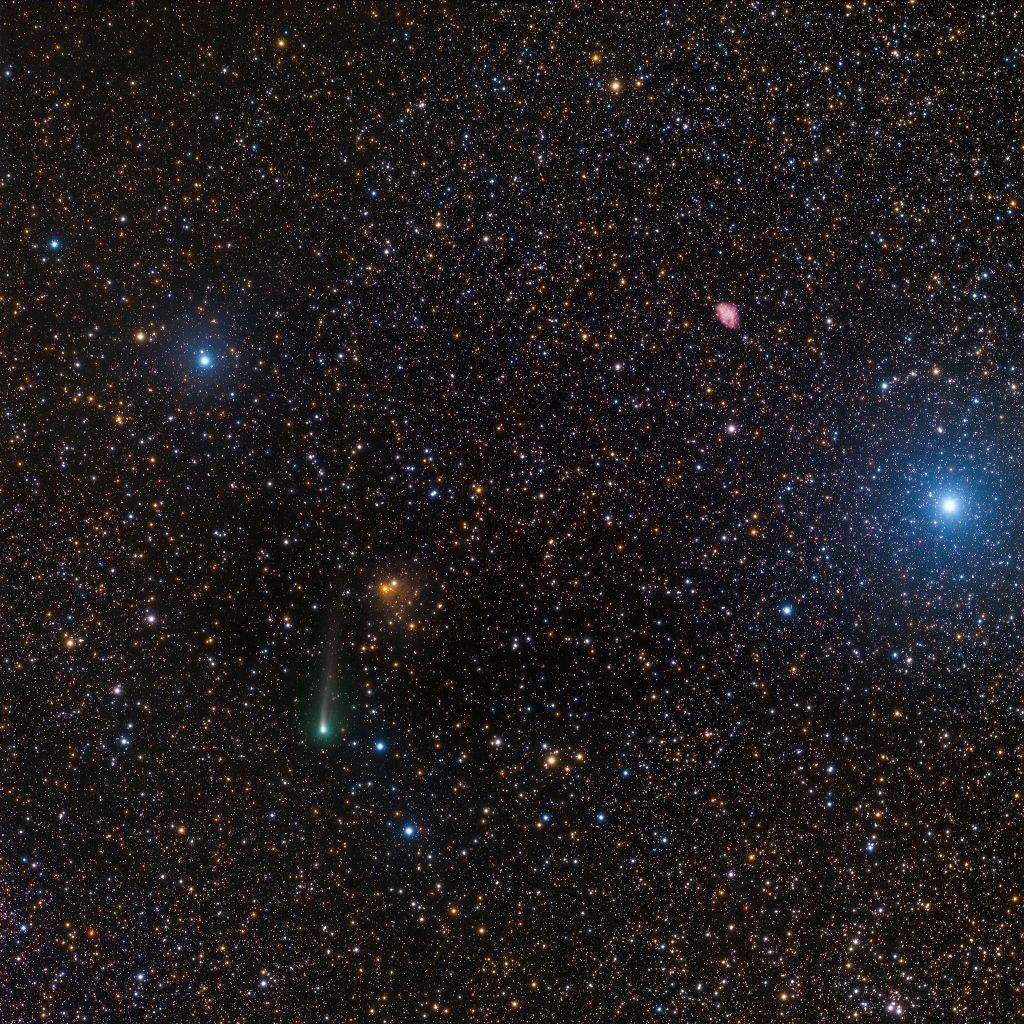2021年10月22日
A Comet and a Crab
Image Credit & Copyright: Jose Mtanous
Explanation: This pretty field of view spans over 2 degrees or 4 full moons on the sky, filled with stars toward the constellation Taurus, the Bull. Above and right of center in the frame you can spot the faint fuzzy reddish appearance of Messier 1 (M1), also known as the Crab Nebula. M1 is the first object in 18th century comet hunter Charles Messier’s famous catalog of things which are definitely not comets. Made from image data captured this October 11, there is a comet in the picture though. Below center and left lies the faint greenish coma and dusty tail of periodic comet 67P Churyumov-Gerasimenko, also known as Rosetta’s comet. In the 21st century, it became the final resting place of robots from planet Earth. Rosetta’s comet is now returning to the inner solar system, sweeping toward its next perihelion or closest approach to the Sun, on November 2. Too faint to be seen by eye alone, the comet’s next perigee or closest approach to Earth will be November 12.
Tomorrow’s picture: light-weekend
彗星与螃蟹
影像提供与版权: Jose Mtanous
说明: 这片跨幅超过2度(4个满月)的美丽星空视野,满布着金牛座方向的繁星。在影像的中右上方,可看到M1(蟹状星云)形似泛红弥漫光斑的身影在18世纪,由彗星猎人查尔斯·梅西耶所编录、“确定不是彗星”的著名星表里,M1是其中的第一号天体。此外,这幅摄于10月11日的影像,还捕捉到一颗彗星。在视野的中右下方,可见到周期彗星67P(丘泽彗星、罗塞塔彗星)的暗淡泛绿彗发及尘尾。在21世纪,它更成为一艘来自地球的探测器的最后长眠之地。目前,太暗肉眼不得见的罗塞塔彗星,已重返太阳系内围,将在11月2日运行到离太阳最近的近日点,并在11月12日行进到最近地球的位置。
明日的图片: light-weekend








翻译有一个小错误:
there is a comet in the picture though. Below center and left lies the faint greenish coma and dusty tail of periodic comet 67P Churyumov-Gerasimenko
还捕捉到一颗彗星。在视野的中右下方,可见到周期彗星67P(丘泽彗星、罗塞塔彗星)的暗淡泛绿彗发及尘尾
应该是中左下方